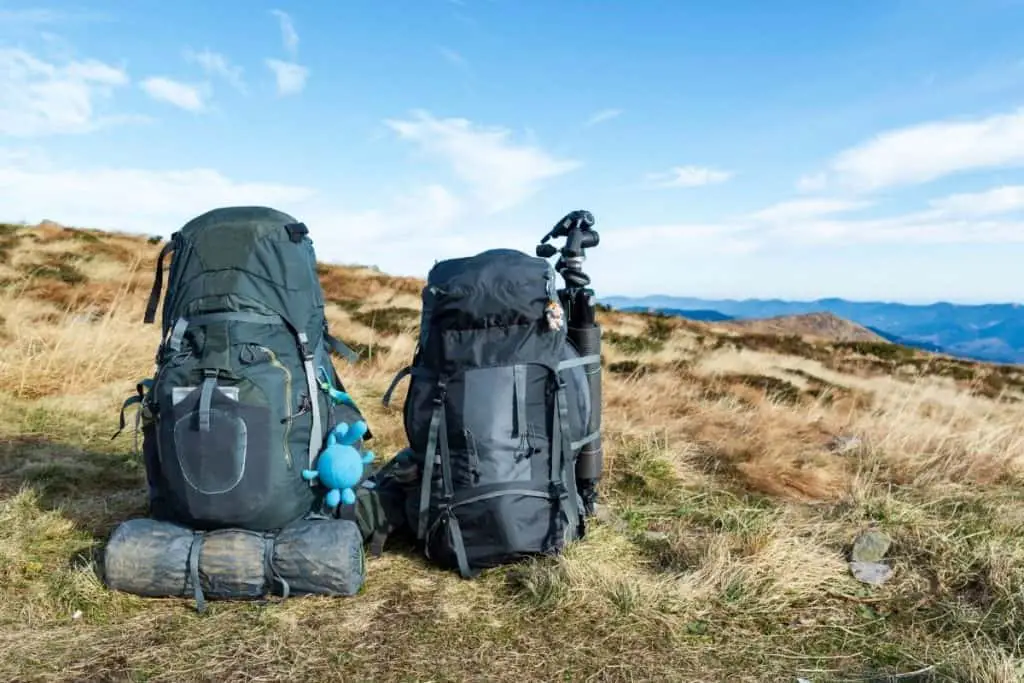When you’re out hiking, you might not be thinking about keeping your water container clean. An Osprey water bladder has specific cleaning instructions that I’ll be going over in this article. I’ll also be covering things that should be avoided and how often you fully clean them!
What is an Osprey Hydration Bladder?
An osprey is a water container that has become popular with hikers for its high capacity, durability, and effectiveness.
It comes in different sizes and shapes, but the basic idea is the same across models – it’s a bladder that holds water, with a hose extending from one side.
You fill the bladder with water, screw on the top, and drink from it by sucking on the hose. It works similarly to a Camelbak, which has become popular in recent years.
Since we use it for hiking and ultralight backpacking, we don’t carry soap when we hike – it weighs too much, and you only need soap if you want to wash your clothes.
However, at the end of the trip, I still found it necessary to clean the bladder thoroughly! Otherwise, mold starts growing inside it.
What to Avoid When Washing the Osprey Bladder
Make sure to note the following before you begin to wash and dry your water bladder.
- Bleach – Bleach is great for cleaning more items, but it should be avoided for all Osprey products.
- Boiling Water – This could damage the container, and possibly ruin it completely. If it does become damaged because of the water you won’t be able to return the product.
Osprey Water Bladder Cleaning Steps
Follow this step by step guide to always have a clean and new looking hydration bladder!
1. Remove the Hose and Empty any Remaining Water
Before you can begin to clean and wash the bladder you need to make sure there’s no water left inside the container.
If you leave it upside down for around 10-15 minutes that should be enough to get most of the leftover moisture out.
2. Rinse out with Hot Water
Instead of using a mix with bleach, take some hot water and mild soap and fill up the water bladder. Rinse it out multiple times and make sure to get in between all folds in the bladder for those with multiple compartments.
Don’t boil water and use that because there’s a higher chance of damaging the gear by doing so. Stick with warm water and soap.
Since we’re avoiding bleach and other cleaning liquids, it’s important to fully clean it to prevent mold from growing on the inside walls.
3. Scrub Down Each Individual Piece
Many of the Osprey bladders are designed with parts that can be taken apart and cleaned. You should remove the bite valve so that you can clean the inside material.
If there’s a cover on the bite valve that can be rinsed out as well.
4. Leave it to Dry
You can either leave the Osprey on a drying rack or hang it up so that it will air dry overnight. Always leave it in a room that’s cool and dry when going through this drying step.
In terms of storage – it’s best to deflate the bladder as much as possible and store it vertically in well-ventilated bags. It will keep it from developing mold or mildew stains inside.
Tips For Keeping The Reservoir Clean
You don’t always need to fully clean your Osprey after every use, especially if you follow these tips below!
- Rinse out the bladder in between each use
- Always keep it in an environment that’s cool and dry
- Occasionally use a cleaning tablet to remove any bacteria
If you don’t have the right cleaning equipment, my recommended product is this Osprey cleaning kit (View on Amazon).
How Often Should You Clean The Water Bladder
How often this is necessary varies by person and by conditions – if you’re using your Osprey every day, you might not need to clean it for weeks at a time. Either way, one of the more important things to do is dry out the hydration pack so there’s no moisture left inside.
However, I usually give mine a thorough cleaning each month because we take long trips that last several days, and I don’t want to deal with mold near the end of our trip!
Final Thoughts
The most important part is not to let your bladder grow mold in the first place. To do that, be sure to store it full of warm water after cleaning and clean it out at least once a week (even if you’re using chlorine bleach – this is just good hygiene).
If you follow these steps, you’ll never need to worry about mold or mildew when storing or cleaning your water bladder.




